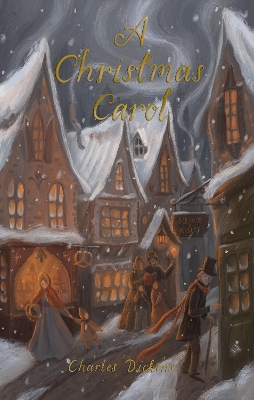LoveReading Says
LoveReading Says
This edition of The Christmas Carol is one of a range of marvellous comic books created in the '50s and '60s now with artwork re-coloured and covers digitally enhanced for a new generation. Perfect bound at a terrifically good value price.
A message from the publisher:
We're delighted to re-introduce these marvellous comic books to new generations of readers who will surely enjoy them as fantastic tales of adventure and excitement but will also improve their reading skills as a result and be inspired to read the complete versions of many of these fine works. I sincerely hope that you enjoy these superb adaptations and are similarly inspired as I was, nearly 50 years ago - Jeff Brooks, CEO, Classic Comic Store Ltd
Visit our '50 Classics Everyone Should Read' collection to discover more classic titles.
LoveReading
Find This Book In
About
A Christmas Carol Synopsis
Click to explore our LoveReading Loves section.
Ebenezer Scrooge is a miserly old skinflint. He hates everyone, especially children.
But at Christmas three ghosts come to visit him, scare him into mending his ways, and he finds, as he celebrates with Bob Cratchit, Tiny Tim and their family, that geniality brings its own reward.
This finest of all Christmas stories is beautifully illustrated with Arthur Rackham’s superb line drawings.
About This Edition
Author
About Charles Dickens
Charles Dickens was born in Landport, Hampshire, during the new industrial age, which gave birth to theories of Karl Marx. Dickens's father was a clerk in the navy pay office. He was well paid but often ended in financial troubles. In 1814 Dickens moved to London, and then to Chatham, where he received some education. The schoolmaster William Giles gave special attention to Dickens, who made rapid progress. In 1824, at the age of 12, Dickens was sent to work for some months at a blacking factory, Hungerford Market, London, while his father John was in Marshalea debtor's prison. "My father and mother were quite satisfied," Dickens later recalled bitterly. "They could hardly have been more so, if I had been twenty years of age, distinguished at a grammar-school, and going to Cambridge." Later this period found its way to the novel LITTLE DORRITT (1855-57). John Dickens paid his £40 debt with the money he inherited from his mother; she died at the age of seventy-nine when he was still in prison.
More About Charles Dickens
